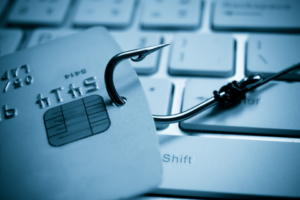| Online: | |
| Visits: | |
| Stories: |

| Story Views | |
| Now: | |
| Last Hour: | |
| Last 24 Hours: | |
| Total: | |
Phishing works and here’s why
http://robertsiciliano.com/
A phishing e-mail is sent by a cyberthief to trick its recipient into revealing sensitive information so that the crook could steal money from the recipient or gain access to a business’s classified information. One way to lure an employee is for the crook to make the e-mail appear like it was sent by the company’s CEO. Often, phishing e-mails have urgent subject lines like “Your Chase Bank Balance Is Negative.”
 In its 2015 Data Breach Report, Verizon reported that 23 percent of employees open their phishing e-mails. Eleven percent go further by clicking on something they shouldn’t.
In its 2015 Data Breach Report, Verizon reported that 23 percent of employees open their phishing e-mails. Eleven percent go further by clicking on something they shouldn’t.
Why do so many employees (and mainstream users) fail to recognize a phishing e-mail? Strong security awareness training at companies is lacking. Perhaps the company simply tosses a few hardcopy instructions to employees. Perching them before videos isn’t enough, either.
Security awareness training needs to also include staged phishing attacks to see which employees grab the bait and why they did so. With a simulated phishing attack approach, employees will have a much better chance of retaining anything they’ve learned. It’s like teaching a kid to hit a homerun; they won’t learn much if all they do is read instructions and watch videos. They need to swing at balls coming at them.
The return on investment from staged phishing attacks will more than offset the cost of this extra training. Living the experience has proven to be a far more effective teacher than merely reading about it or listening to a lecture. As straightforward as this sounds, this approach is not the rule in companies; it’s the exception.
Even rarer is when phishing simulation is ongoing rather than just an annual or semiannual course. But just because it’s rare doesn’t mean it’s not that effective. Companies tend to cut corners any way they can, and foregoing the phishing simulations is often at the top of the list of investments to nickel-and-dime.
If you want to see how gullible your employees (or family and friends) are to phishing e-mails, which again, are geared towards tricking the recipients to click on a malicious link or attachment, pay a visit to Phish.io.
Here you can register, and this free service will send phishing e-mails to your specified recipients. However, these are harmless tests and will not lead to anything negative—other than to reveal who can be duped.
Robert Siciliano is an identity theft expert to BestIDTheftCompanys.com discussing identity theft prevention.
Robert Siciliano personal security and identity theft expert and speaker is the author of 99 Things You Wish You Knew Before Your Identity Was Stolen.
Source: http://robertsiciliano.com/blog/2015/11/26/phishing-works-and-heres-why/



